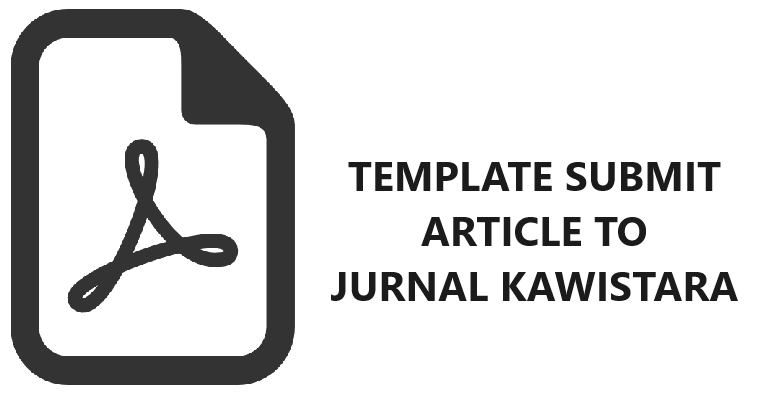Sense of Place Destinasi Wisata Urban: Kasus Titik Nol Kilometer, Yogyakarta
Bonifasia Yuniar Rifani(1*)
(1) Universitas Gadjah Mada
(*) Corresponding Author
Abstract
Keywords
Full Text:
PDFReferences
Abou-Shouk, M.A., Zoair, N., El-Barbary, M.N., and Hewedi, M.M. (2017). ‘Sense of place relationship with tourist satisfaction and intentional revisit: Evidence form Egypt’, International Journal of Tourism Research, pp 1-10. doi: 10.1002/jtr.2170.
Beidler, K. J. dan Morrison, J. M. (2016). ‘Sense of place: inquiry and application’, Journal of Urbanism: Internationial Research on Placemaking and Urban Sustainability, 9(3) pp. 205-215. doi: 10.1080/17549175.2015.1056210.
Boivin, M. dan Tanguay, G. A. (2019). ‘Analysis of the Determinants of Urban Tourism Attractiveness: The Case of Quebec City and Bordeaux’, Journal of destination Marketing dan Management, 11 pp. 67 – 79. doi: 10.1016/j.jdmm.2018.11.002.
Carmona, M., Heath, T., Oc, T., dan Tiesdell, S. (2003). Public Places–Urban Spaces, The Dimension of Urban Design. Oxford: Architectural Press.
Cheng, T., dan Wu, H. (2015). ‘How do environmental knowledge, environmental sensitivity, and place attachment affect environmentally responsible behavior? An integrated approach for sustainable island tourism’, Journal of Sustainable Tourism, 23(4) pp. 557 – 576. doi: 10.1080/09669582.2014.965177.
Fan, J., Qiu, H. (2014). ‘Examining the Effects of Tourist Resort Image on Place Attachment: A Case of Zhejiang, China’, Public Personnel Management, 43(3) pp 340 – 354. doi: 10.1177/0091026014535180.
Gross, M., dan Brown, G. (2008). ‘An empirical structural model of tourists and places: Progressing involvement and place attachment into tourism’, Tourism Management, 29(6) pp. 1141 – 1151. doi: 10.1016/j. tourman.2008.02.009.
Habibah, A., Idris M., Jusoh H., dan Er A. C. (2013). ‘Place-Making of Ecotourism in Tasik Chini: From Exploratory to the Contemporary Biosphere Reserve’, Asian Social Science, 9(6) pp 84 – 95. doi: 10.5539/ass.v9n6p84.
Hummon, D. M. (1992). Community Attachment: Local Sentiment dan Sense of Place. New York: Plenum.
Hwang, S., Lee, C., dan Chen, H. (2005). ‘The relationship among tourists’ involvement, place attachment and interpretation satisfaction in Taiwan’s national parks’, Tourism Management, 26(2) pp. 143 – 156. doi: 10.1016/j.tourman.2003.11.006.
Jackson, J.B. (1994). A Sense of Place, a Sense of Time. New Haven, CT: Yale University Press.
Kyle, G., Mowen, A., dan Tarrant, M. (2004). ‘Linking place preferences with place meaning: An examination of the relationship between place motivation and place attachment’, Journal of Environmental Psychology, 24(4) pp. 439 – 454. doi: 10.1016/j. jenvp.2004.11.001.
Lee, J., Kyle, G., dan Scott, D. (2012). ‘The mediating effect of place attachment on the relationship between festival satisfaction and loyalty to the festival hosting destination’, Journal of Travel Research, 51(6) pp. 754 – 767. doi: 10.1177/0047287512437859.
Lew, A. A. (2017) ‘Tourism planning and place making: place-making or placemaking?’, Tourism Geographies, 19(3) pp. 448-466. doi: 10.1080/14616688.2017.1282007.
Najafi M. dan Shariff, M. K. B. M. (2011). ‘The Concept of Place and Sense of Place In Architectural Studies’, International Journal of Humanities and 112 Kawistara, Vol. 11, No. 2, 22 Agustus 2021: 102-113 Social Sciences, 5(8) pp. 1054-1060. doi: 10.5281/zenodo.1082223.
Project for Public Spaces (PPS). (2007). The power of 10 C : Applying placemaking at every scale. Diakses pada tanggal 28 September 2019 dari http://www.pps.org/reference/ the-power-of-10/.
Prayag, G. dan Ryan, C. (2011). ‘Antecedents of Tourists’ Loyalty to Mauritius: The Role and Influence of Destination Image, Place Attachment, Personal Involvement, and Satisfaction’, Journal of Travel Research, XX(X) pp. 1-15. doi: 10.1177/0047287511410321.
Ram, Y., Björk, P., dan Weidenfeld, A. (2016). ‘Authenticity and place attachment of major visitor attractions’, Tourism Management, 52 pp. 110 – 122. doi: 10.1016/j.tourman.2015.06.010.
Ramkissoonn, H. dan Mavondo, F. T. (2015). ‘The Satisfaction-Place Attachment Realtionship: Potentials Mediators and Moderators’, Journal of Business Research, pp. 10 – 19. doi: 10.1016/j. jbusres.2015.05.002.
Razali, M. K., dan Ismail, H. N. (2014). ‘Tourism Place-Making at Tourism Destination from a Concept of Governance’, International Journal of Ecology and Development, 30(3) pp. 88- 97.
Relph, E. (1976). Place and placelessness. London: Pion.
Shamai, S. (1991). ‘Sense of Place: an Empirical Measurement’, Geoforum, 22 pp. 347- 358. doi: 10.1016/0016-7185(91)90017- k.
Smith, S. (2015). ‘A Sense of Place: Place, Culture, and Tourism’, Tourism Recreation Research, 40(2) pp. 220 – 233. doi: 10.1080/02508281.2015.1049814.
Steele, F. (1981). The sense of place. CBI Publishing Company, Inc.
Tuan, Y.F. (1974). Topophilia: A study of environmental perception, attitudes, and values. Englewood Cliffs, NJ: Prentice-Hall.
Wyckoff, M. (2014). Definitions of placemaking: Four different types. Planning dan Zoning News, 32(3). Diakses pada 10 Oktober 2019, dari http://landpolicy.msu.edu/ news/article/lpis_mark_wyckoff_ authors_article_on_four_different_ types_of_placemaking.
Yuksel, A. (2001). ‘Managing Customer Satisfaction and Retention: A Case of Tourist Destinations, Turkey’, Journal of Vacation Marketing,7(2) pp. 153 – 168. doi: 10.1177/135676670100700205.
Yuksel, A., Yuksel, F., dan Bilim, Y. (2010). ‘Destination attachment: Effects on customer satisfaction and cognitive, affective and conative loyalty’, Tourism Management, 31(2) pp. 274 – 284. doi: 10.1016/j. tourman.2009.03.007.
Zakariya K., Mohyuddin M., dan Yaman M. (2007). ‘Refining Tourist’s Place Experience through Placemaking: Concepts and Correlations’, International Journal of Diversity in Organisations, 6(4) pp. 249 – 258. doi: 10.18848/1447-9532/CGP/ v07i04/5801.
Article Metrics
Refbacks
- There are currently no refbacks.
Copyright (c) 2021 Bonifasia Yuniar Rifani

This work is licensed under a Creative Commons Attribution-ShareAlike 4.0 International License.
Jurnal Kawistara is published by the Graduate School, Universitas Gadjah Mada.











